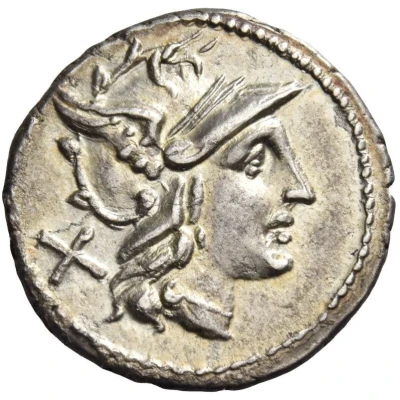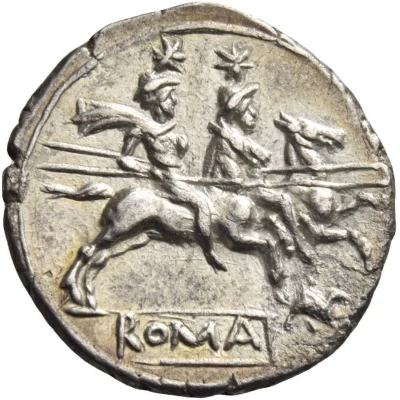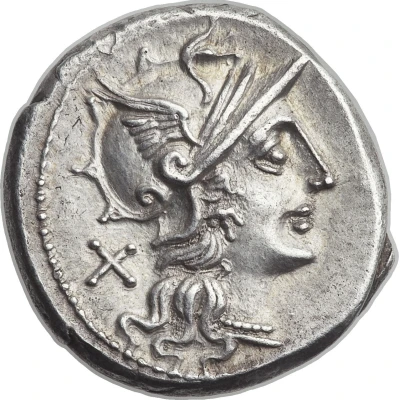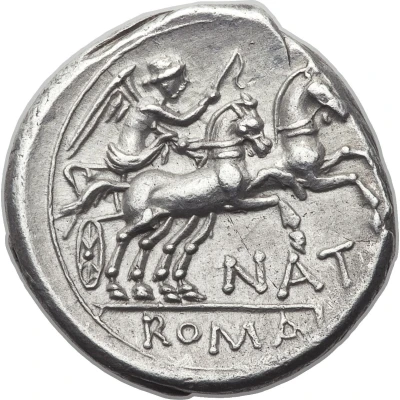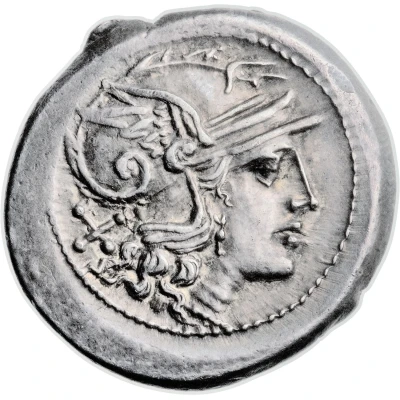
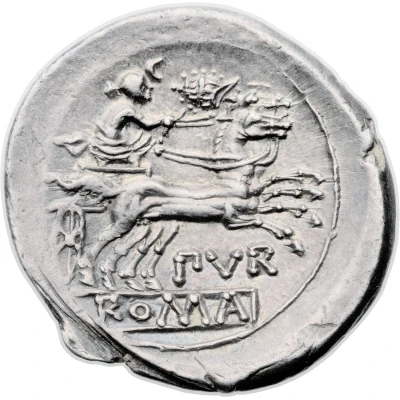

© Heritage Auctions
Denarius Furia: Furius Purpurio; PVR ROMA 169 BC - 158 BC
| Silver (.900) | 3.28 g | 17.6 mm |
| Issuer | Rome › Roman Republic (509 BC - 27 BC) |
|---|---|
| Period | Republic (509 BC - 27 BC) |
| Type | Standard circulation coin |
| Years | 169 BC - 158 BC |
| Value | Denarius (1) |
| Currency | Denarius of 10 Asses (221 – 141 BC) |
| Composition | Silver (.900) |
| Weight | 3.28 g |
| Diameter | 17.6 mm |
| Thickness | 1.5 mm |
| Shape | Round (irregular) |
| Technique | Hammered |
| Orientation | Variable alignment ↺ |
| Demonetized | Yes |
| Updated | 2024-10-06 |
| Numista | N#53262 |
|---|---|
| Rarity index | 93% |
Reverse
Luna in galloping biga right, holding reins with both hands and whip in right hand; inscription in exergue.
Moneyer mark in two parts with lettering in field below horses and murex-shell above the biga.
Script: Latin
Lettering:
PVR
ROMA
Translation: [Furius] Purpurio
Edge
Plain
Comment
The gens Furia, originally Fusia, was one of the most ancient and noble patrician houses at Rome. Its members held the highest offices of the State during the period of the Roman Republic. The first of the Furii to attain the consulship was Sextus Furius Medullinus in 488 BC.The murex is a tropical mollusc with a shell covered with spines used to extract Tyrian purple (reference to the name Purpurio), a very expensive purplish red dye used during antique times by to evoke an important social position.
Interesting fact
One interesting fact about this coin is that it features a portrait of Furius Purpurio, a Roman politician and military leader, on one side, and the goddess Roma on the other. This coin was minted during a time of great political and social change in Rome, as the Republic was transitioning from a system of patrician rule to a more democratic system. The coin's design reflects this shift, as it features imagery that would have been meaningful to both the ruling elite and the common people.
